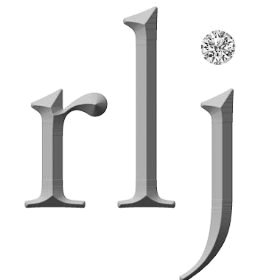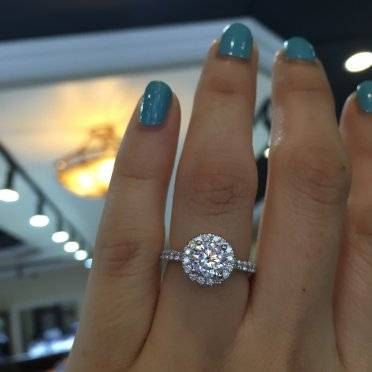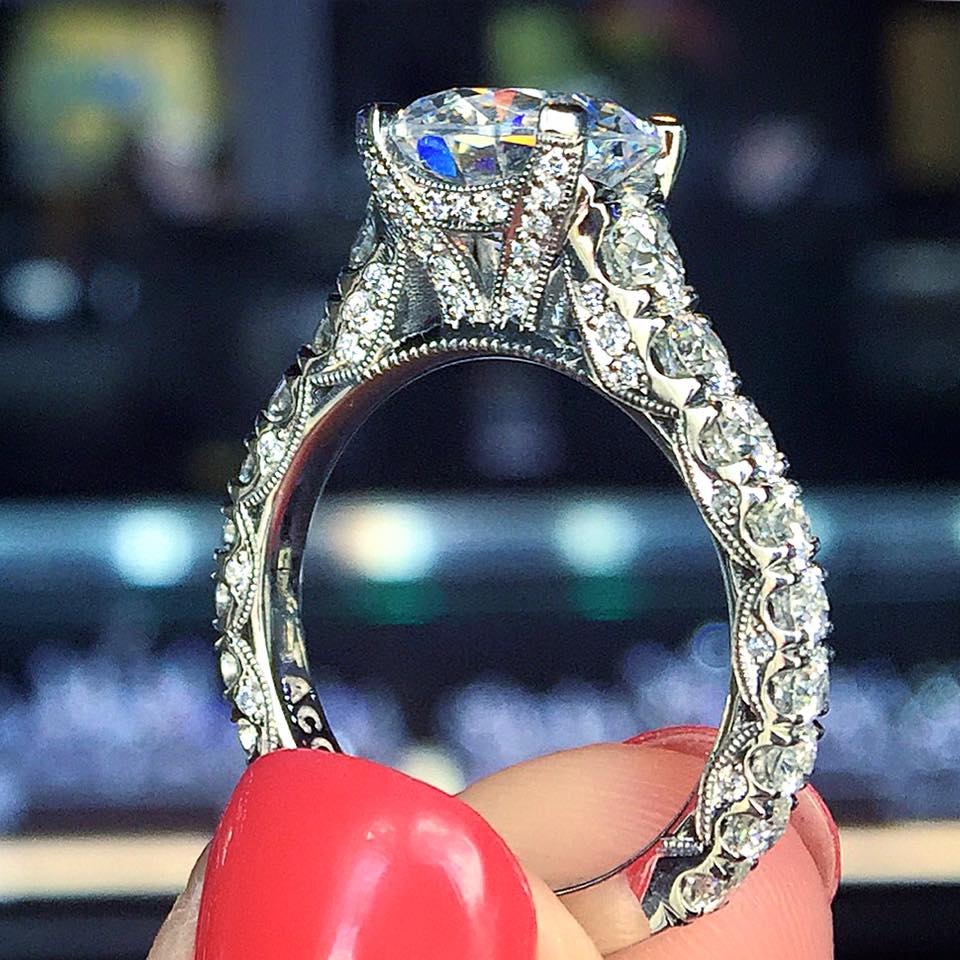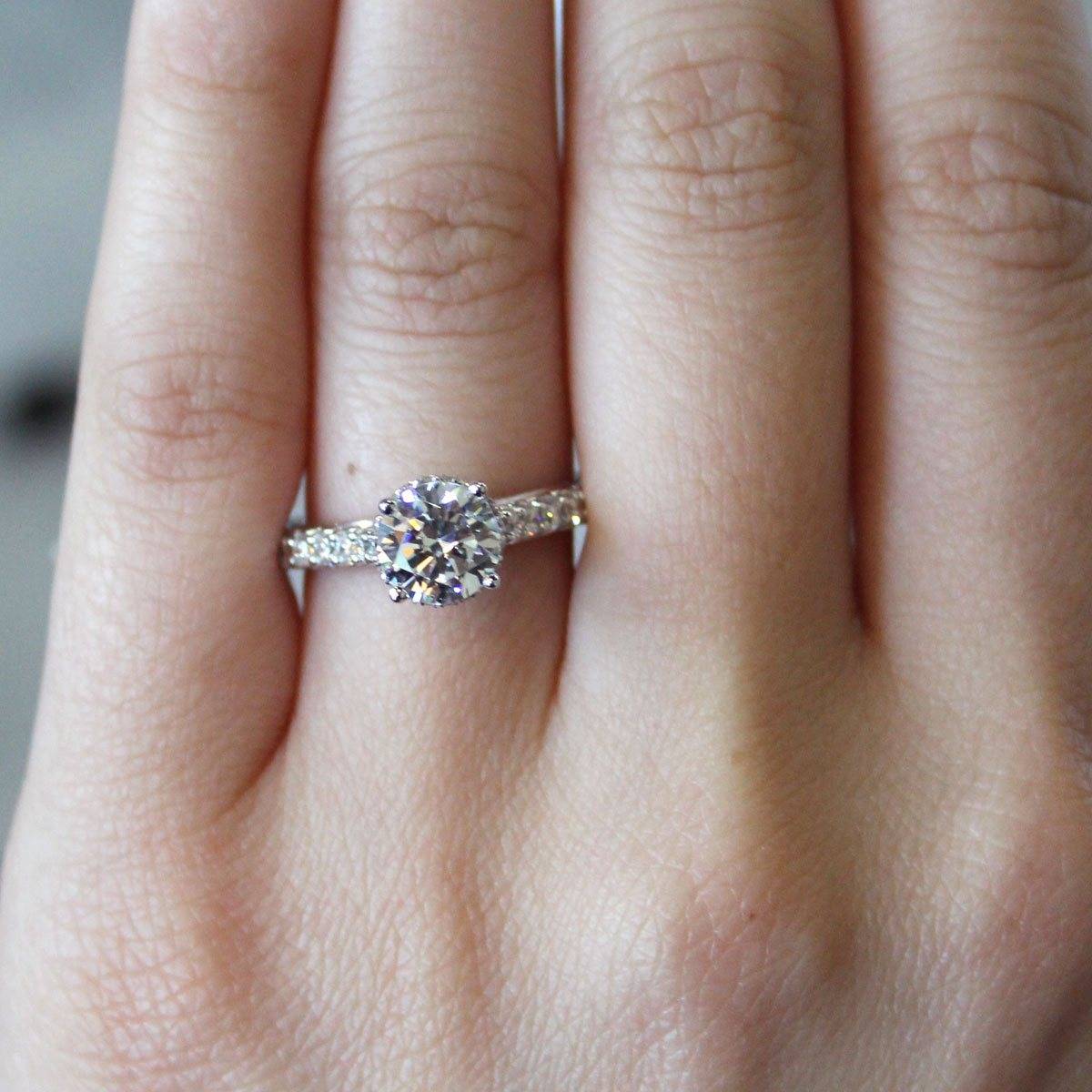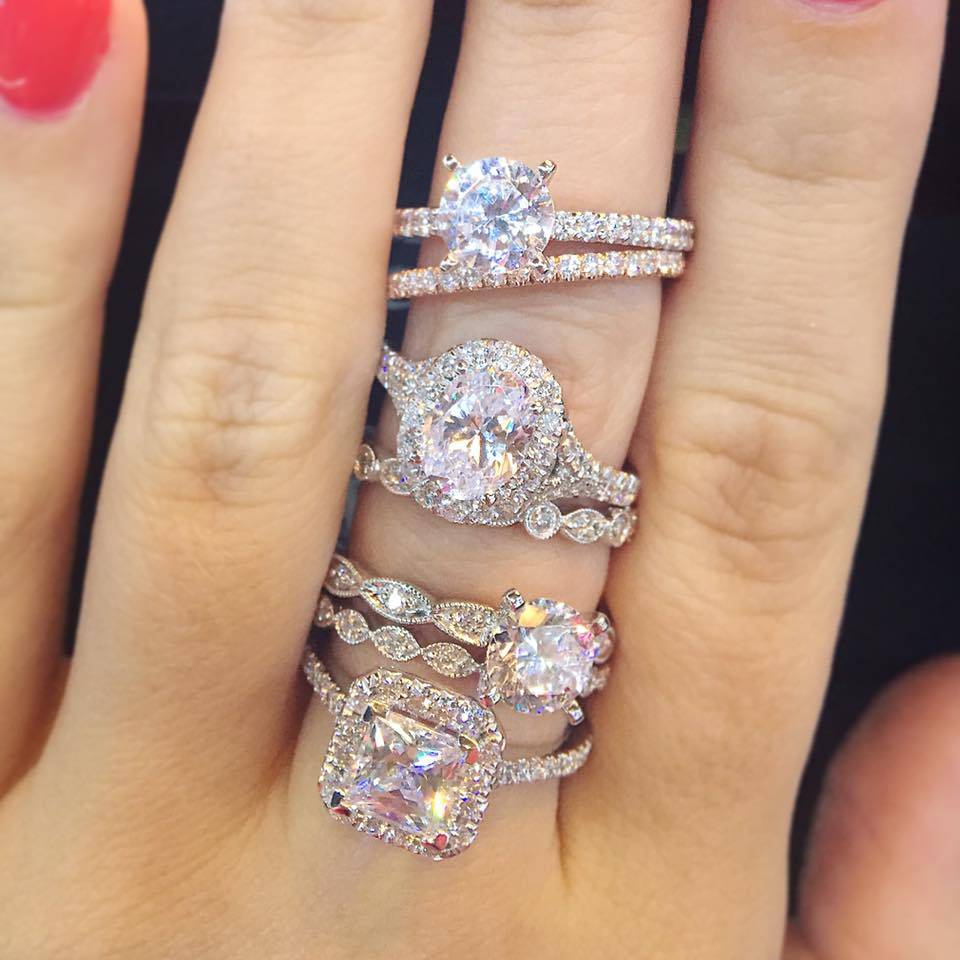Round Brilliant Diamond Facts, History & All You Need to Know
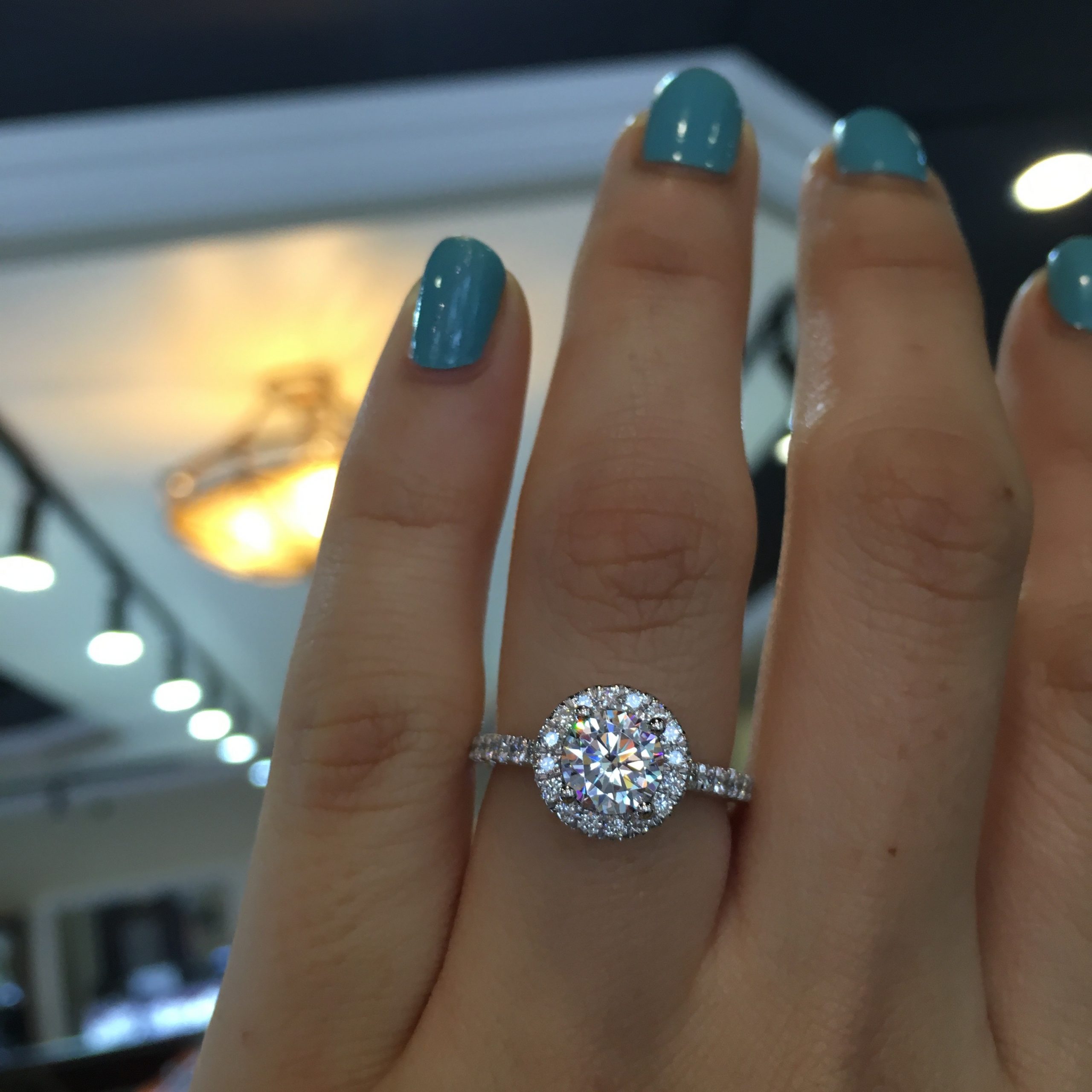
If you’ve been following along with our diamond shapes guides, welcome back! If you’re new, welcome! So far we’ve covered pear shaped diamonds and Old European cut diamonds. Today, it’s about time we got down to round brilliant diamond facts.
History
The round brilliant diamond might be known today as the classic diamond shape, but it was far from the first! That honor belongs to rose cut diamonds, the predecessor of the modern cushion cut. The round brilliant hails from the Old European shape we discussed last.
This 58 facet round (or occasionally round-ish, thanks to imprecise cutting) diamond with a round culet was the beginning stages of the modern round brilliant. It was used widely by 1750 after thousands of years of evolution in diamond cutting. After Single cuts, Rose cuts, and Old Mine cuts, the diamond finally evolved into the circular face up appearance it’s most known for today.
Because this style of cutting was done by hand, and impossible to replicate perfectly every time, each diamond had slightly different dimensions, and each cutter had a slightly different style and technique. So as the OEC evolved, the general term for diamonds was “transitional diamonds.”
Just what were they transitioning to?
In 1919, a diamond cutter named Marcel Tolkowsky published his thesis “Diamond Design: A Study of the Reflection and Refraction of Light in Diamond.” In it, he defined the ideal proportions of a round diamond that would maximize brilliance and fire. His original specifications for the perfectly cut round brilliant diamond were etched in stone: 53% table, 59.3% depth, 34.5 degree crown angle, and a visible culet. By 1950, this was the law of round diamond cutting, and by far the most popular style.
Specs
As time and technology marched on, the specs evolved – though they remain pretty close to Tolkowsky’s. Today, GIA considers a round brilliant “Excellent” if it scores:
- Table: 53-58%
- Depth: 59-62.3%
- Crown Angle: 34-34.9 degrees
- Pavillion Depth: 42.8-43.2 degrees
- Girdle: Thin to Slightly Thick
- Culet: None
- Length to Width Ratio: 1.00-1.01
Related: Everything You Need to Know About Diamond Cut Grades
The culet disappeared over time in the most desirable round brilliant diamonds, but Tolkowsky’s specs remained otherwise pretty on point. Of course, a Very Good and Good GIA cut grade still make for a gorgeous diamond, so there’s some wiggle room.
Popularity Contest
Those specs don’t just make for the most brilliant round diamonds – they’re actually the best, period. A round brilliant’s specs make it better at reflecting and refracting light than any other fancy diamond shape. This is one reason they’re so popular.
Over 75% of all diamonds sold are round brilliants. They capture the hearts of brides everywhere with perfect symmetry, timeless beauty, and unparallelled sparkle. Because the diamond trade revolves around supply and demand, this means a round brilliant commands a higher price per carat than any other diamond shape. A round brilliant diamond can cost up to 35% more per carat than an equally heavy fancy shaped diamond with the exact same color, cut and clarity grades.
Related: Everything You Need to Know About Diamond Color
But a round diamond’s popularity isn’t the only factor in its premium price tag. Beautiful as they are, they waste a lot of rough diamond when a cutter first shapes a round.
Brass Tacks of Round Brilliant Diamond Facts
Pros:
- Classic Shape – there’s no denying that this diamond shape is iconic, and usually the first one people think of when they think diamond rings.
- Lots of leeway in color – the RB’s many facets mean that they hide any unwanted color tinge very well. On the other hand, many people prefer a little warmth to their diamonds, the kind you find in near colorless grades G/H. This saves you money.
- Lots of leeway in clarity – Like those 57-58 facets hide color well, they also hide minor inclusions. So you can opt for a lower clarity grade without sacrificing the diamond’s beauty. Again, this saves you cash.
- Any setting works – because they’re so classic, they’re also super versatile. Round brilliants look just as gorgeous in an abstract split shank as they do in an elegant solitaire or a glamorous halo.
Cons:
- They’re more expensive – there’s no getting around this fact. You’ll pay the highest per carat price for a round brilliant diamond. Clearly, the majority of people buying diamonds think they’re well worth it!
- They can look smaller – A round brilliant looks smaller per carat than elongated fancy shapes like oval, pear, marquise, emerald and radiant. It’s because they’re prized right around an even length to width ratio, so they don’t get a boost from the optical illusion of going vertically on your finger.
